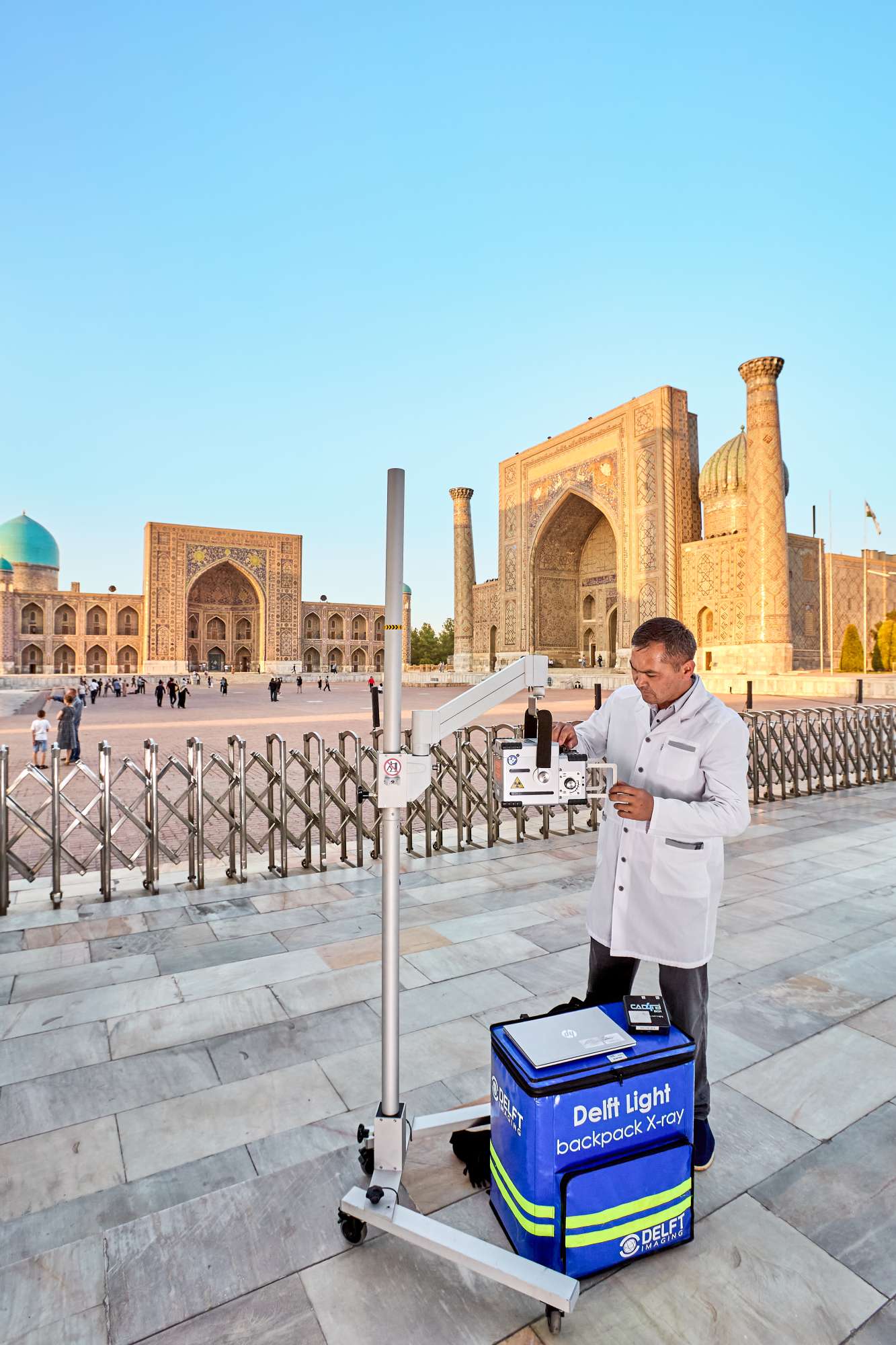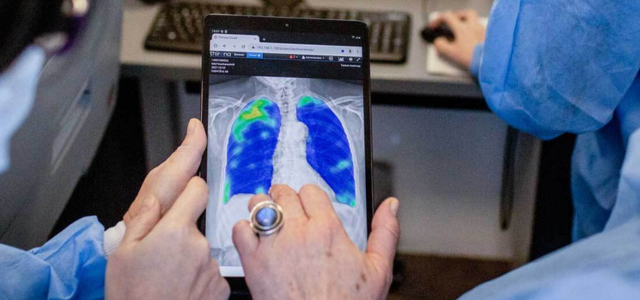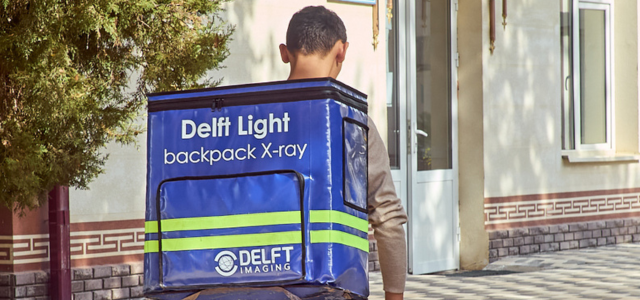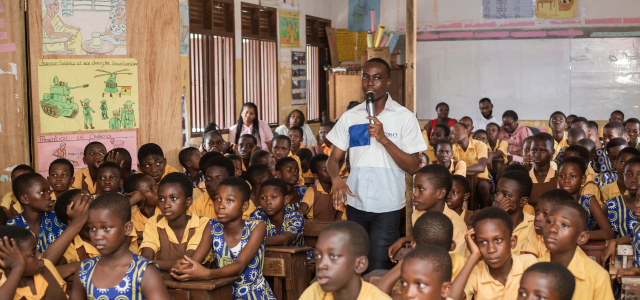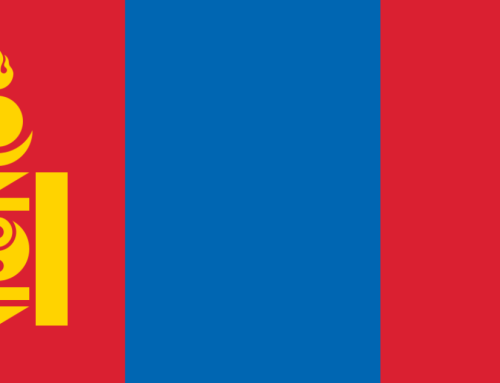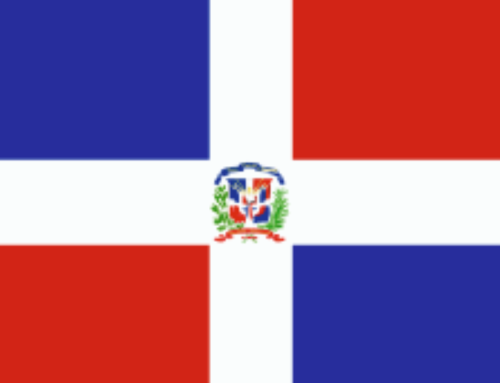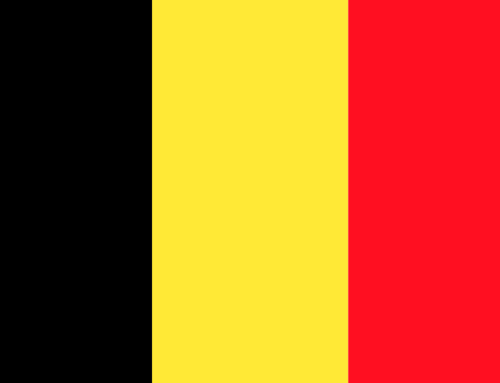In a nation with a population of over 34 million, an estimated 21,000 people developed TB in 202. Additionally, more than 7000 are said to be missing people with TB, of which more than 1000 are children. By 2025, Uzbekistan’s National TB Strategy for 2021-2026 aims to reduce the TB incidence rate by 50% and the death toll attributed to the disease by 75%.
In 2021, Delft Imaging delivered two innovative ultra-portable Delft Light backpack X-ray systems with CAD4TB software (to detect TB-related abnormalities on chest X-rays automatically)to the Ministry of Health in Uzbekistan. The aim was to provide for the vulnerable communities of remote regions in the nation. The project, funded by USAID, was implemented in collaboration with the National Tuberculosis Program of Uzbekistan. The portable X-ray machines will be used in the Tashkent region.
Additionally, in 2023, we provided six Delft Light with CAD4TB to the Ministry of Health in Uzbekistan to roll out across all regions of the country. The procurement was facilitated by the United Nations Development Programme (UNDP) and included the necessary training and installation services to ensure a successful roll-out.
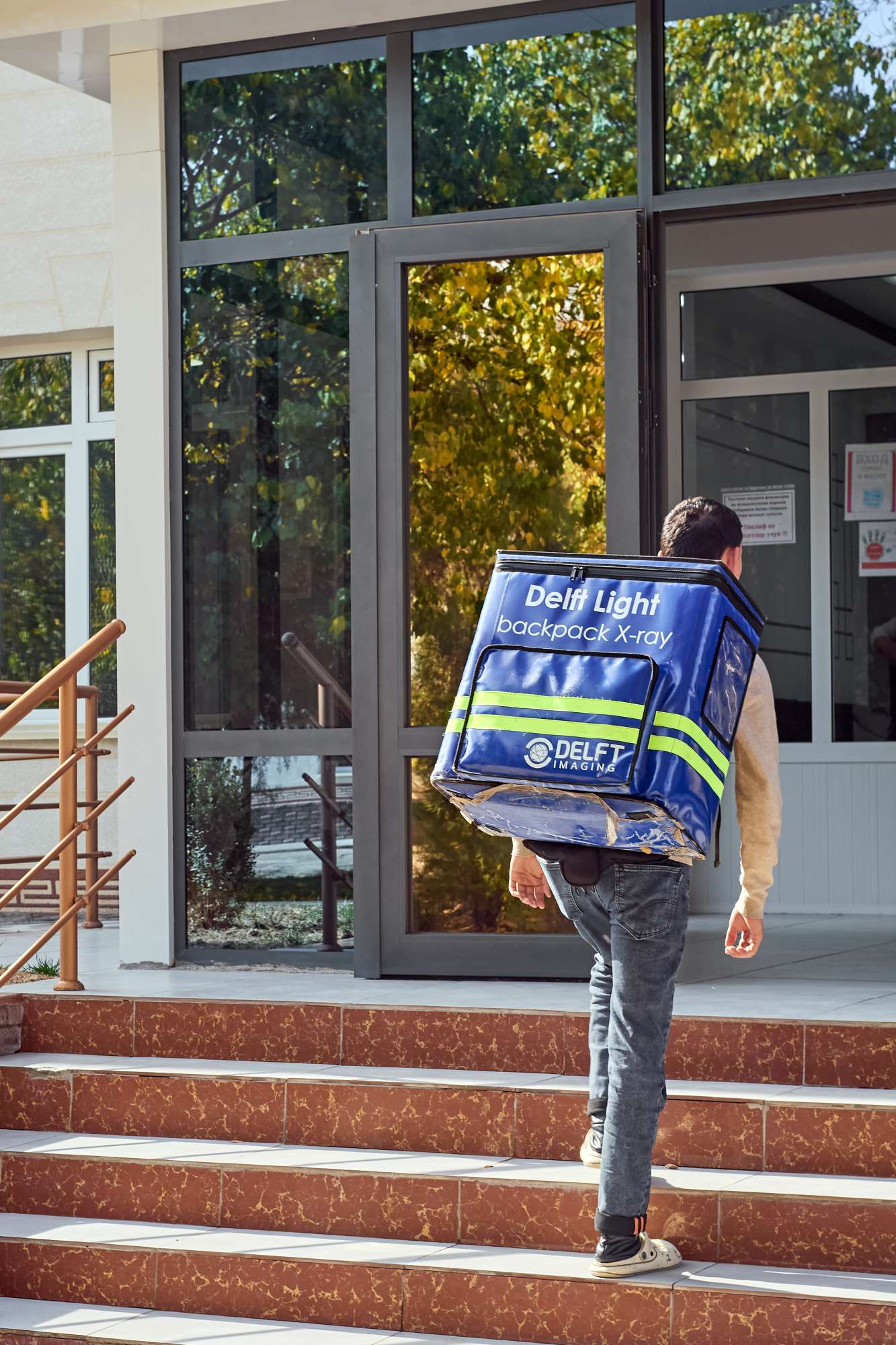
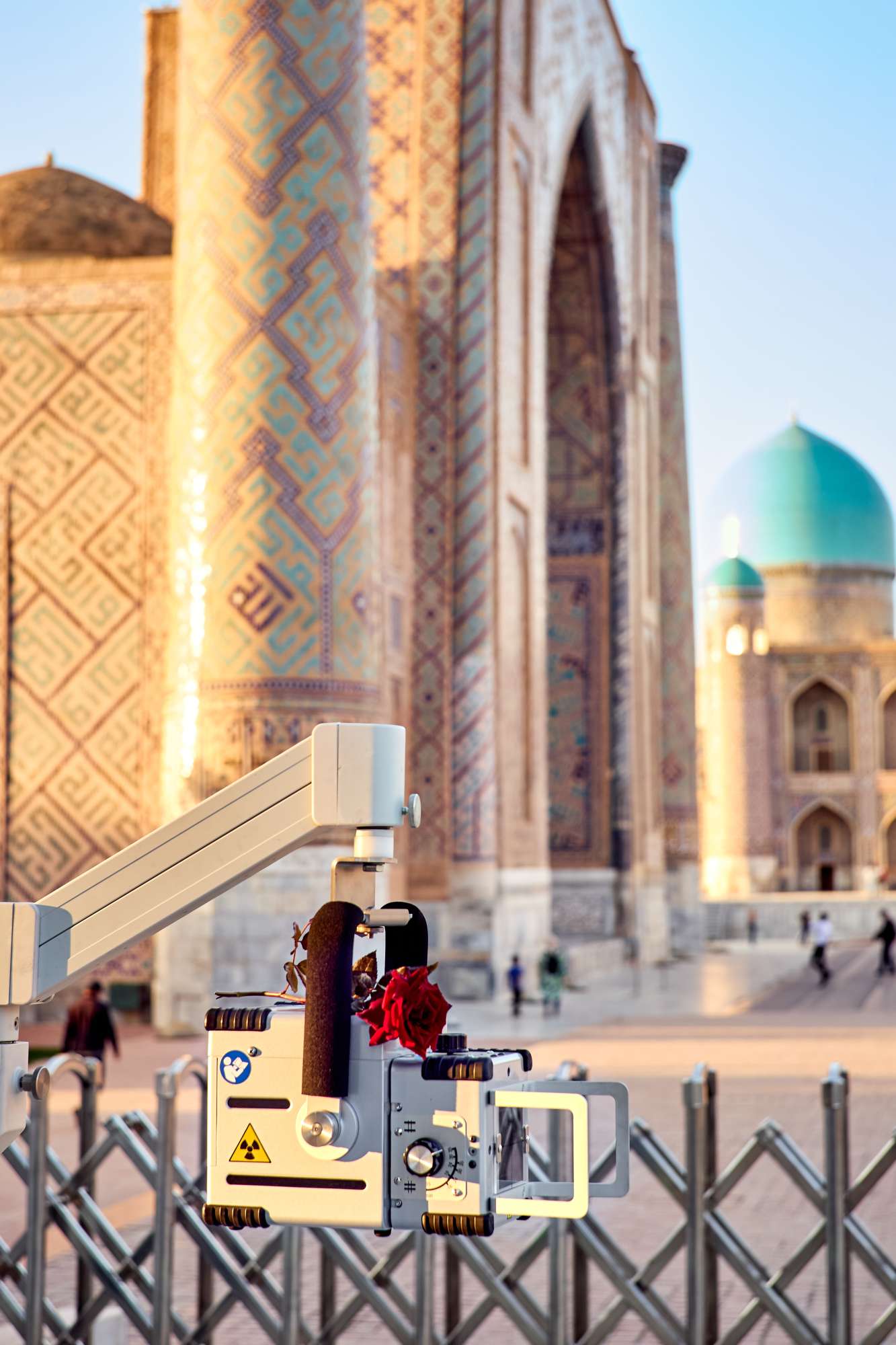
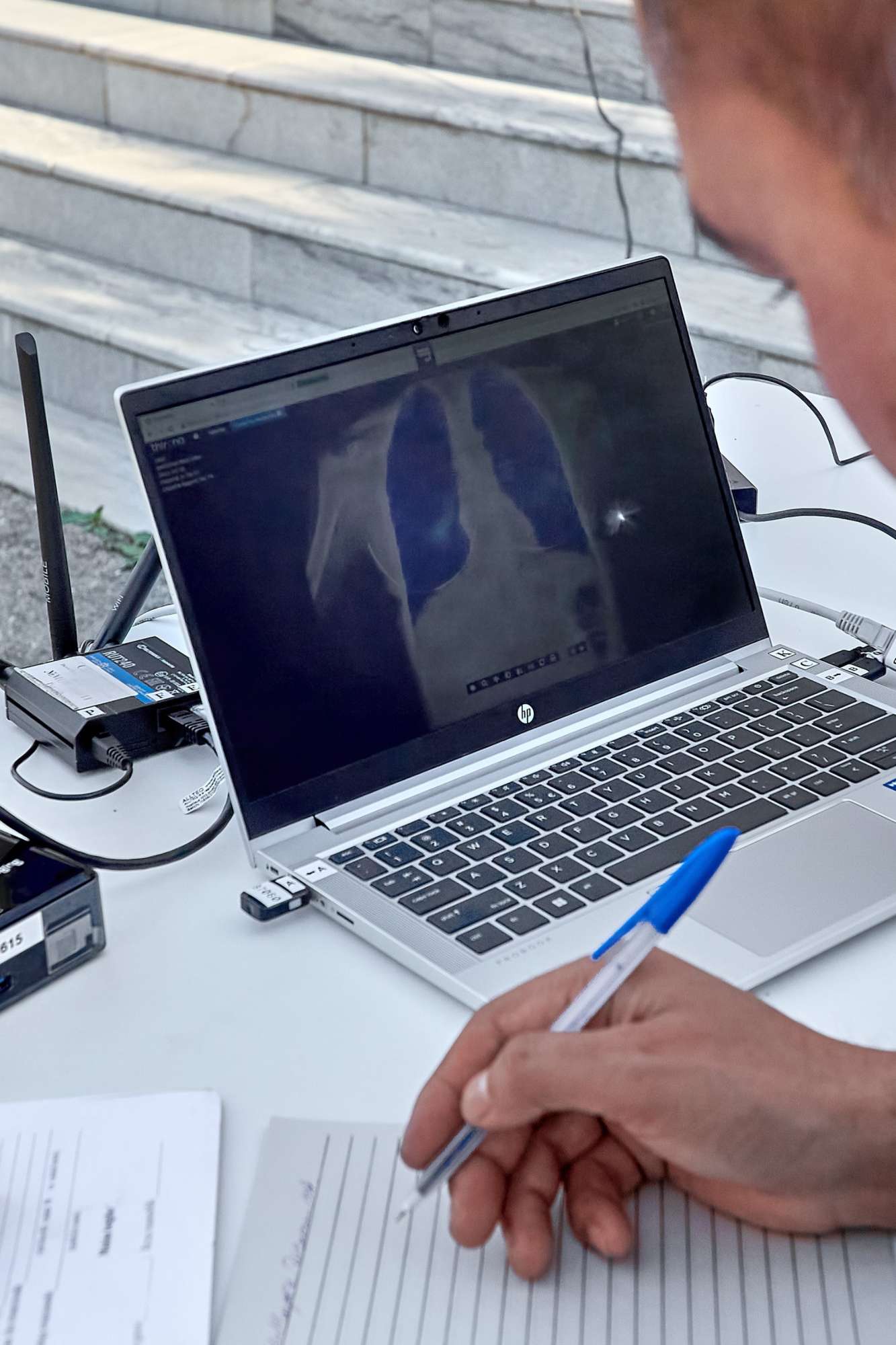
Making a difference
The utilisation of the Delft Light and CAD4TB software was extensively discussed during the International Tuberculosis Conference 2022.
For more information about how the Delft Light portable X-ray and CAD4TB solutions are used in Uzbekistan, please view the story of ‘Experience on Ultra-Portable Digital X-ray and CAD Implementation in Uzbekistan’, by Dr Akmal Umarov, Radiologist and Coordinator at the Republican Scientifical & Medical Center of Uzbekistan, during the Delft Q2 webinar of 2023.
During the webinar, Dr Umarov noted: “After training our specialists, we noticed that screening people from remote areas using portable X-rays doesn’t require additional expenses, other resources like films or other personnel. So even if you have one operator, it is enough, then sending several people will help reduce the cost of exams in remote areas. The system can work online and offline.”
Moreover, Dr Umarov noted during the webinar: “Al helps simplify the activity of radiologists. At first, they were scared that we would probably lose our jobs, but then they understood that it would ease the performance and help us quickly receive patients. Within 3-5 seconds, we can see to see focal lesions. It helps to have the heat map, which is very convenient for identifying his pathology and, of course, such parameters for us. It’s convenient because we can print and collect this data and medical history.”
The story of the project was also covered by the United States Embassy in Uzbekistan since the funding for the project was from USAID.
